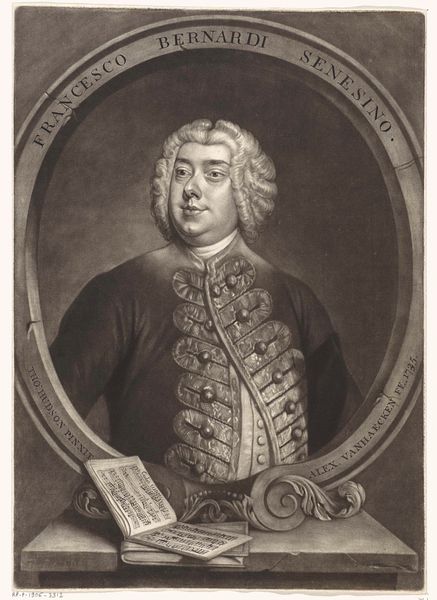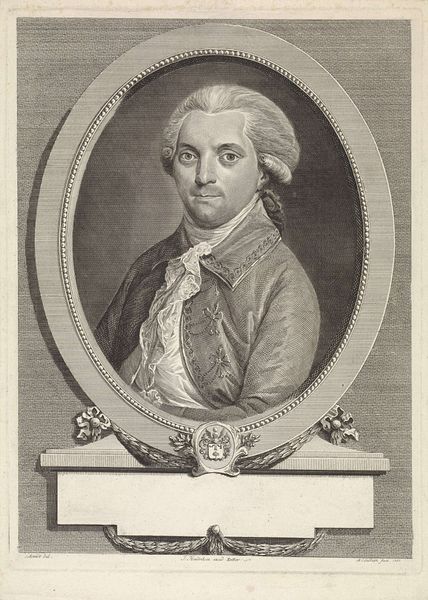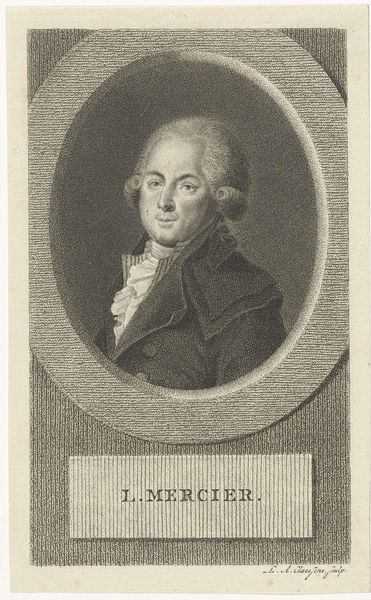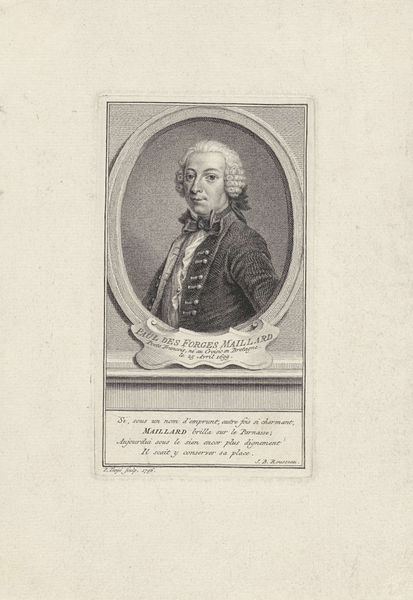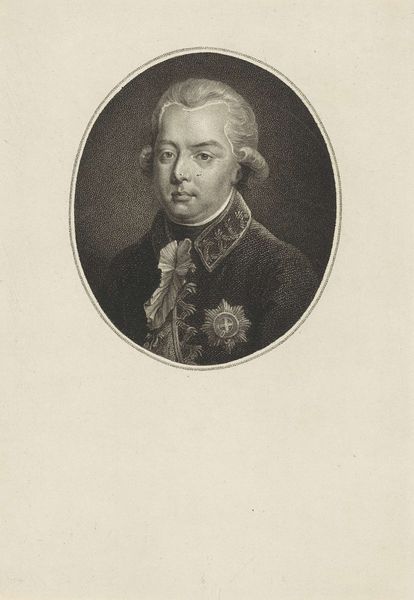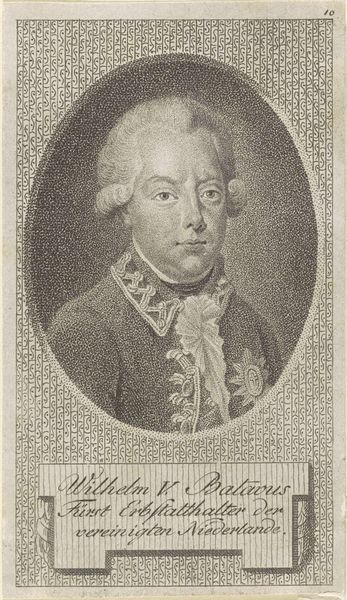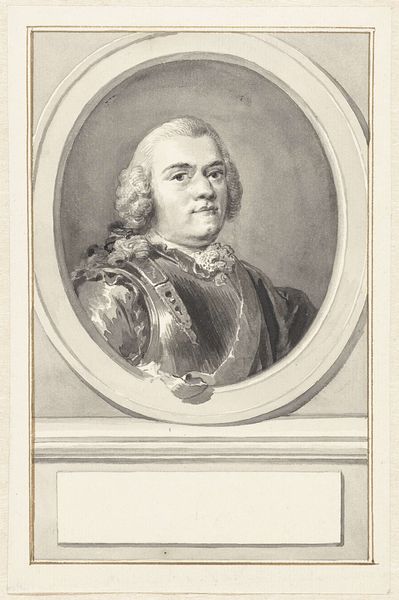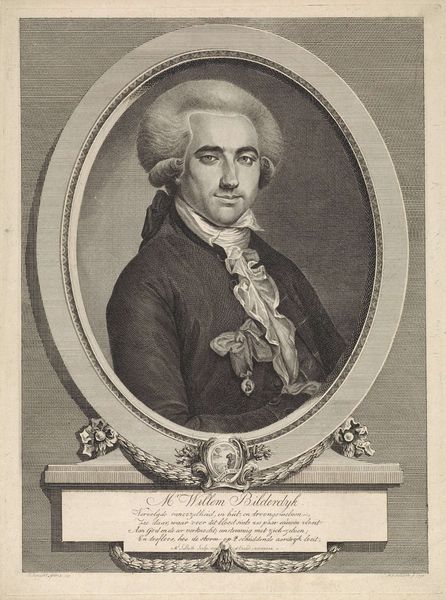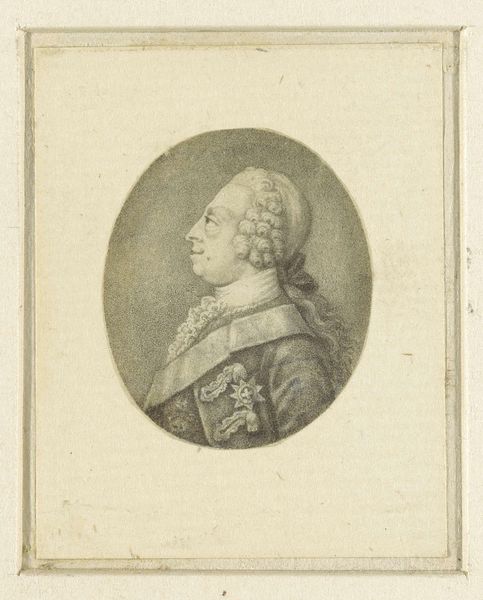
Portret van Louis Alexandre Berthier, maarschalk van Frankrijk 1806
0:00
0:00
ludwiggottliebportman
Rijksmuseum
engraving
#
portrait
#
neoclacissism
#
19th century
#
line
#
history-painting
#
engraving
Dimensions: height 151 mm, width 88 mm
Copyright: Rijks Museum: Open Domain
Curator: Let’s turn our attention to this striking engraving from 1806 by Ludwig Gottlieb Portman, titled “Portret van Louis Alexandre Berthier, maarschalk van Frankrijk.” It’s a compelling image housed right here in the Rijksmuseum. Editor: My first thought is how controlled and contained the image feels. There's a certain stoicism in Berthier's expression and pose. Is it meant to convey power, or something else entirely? Curator: Definitely power, but also the rigid societal structures of the time. Berthier, as a Marshal of France, occupied a very specific and influential position in Napoleonic society. Portman, working during the height of Neoclassicism, uses line and form to convey Berthier’s status, his role, and his allegiance. This portrait also arrives in the wake of the French Revolution. The symbolism must be coded somehow. Editor: The framing device, the oval cartouche, immediately brings to mind classical cameos and official seals. The uniform, depicted with such meticulous detail, isn't merely clothing, is it? Curator: Absolutely not. It functions as a visual representation of Berthier's authority and connection to Napoleon’s empire. Consider the olive branches embroidered on his collar. They might seem like symbols of peace, but in this context, they represent a Pax Romana imposed through military strength and occupation. His very identity is entwined with French Imperial expansion and policy at that point in time. Editor: It’s interesting how even something like an engraving can speak volumes about the complexities of power. The absence of vibrant colors emphasizes the rigidity and perhaps even the suppression of individuality during this era. There's also something very enduring about portraiture of important people and figures. This piece captures him in the moment, but suggests an everlasting influence. Curator: Indeed, while seemingly straightforward as a portrait, it unveils a deeper discourse surrounding political authority and the symbols that legitimize it. It also begs us to think about the impact of Neoclassical principles on consolidating this power through aesthetics. Editor: It invites us to investigate the relationship between symbols of power, such as military uniforms, and the individual placed at the nexus of a larger, more significant and potent time in European history.
Comments
No comments
Be the first to comment and join the conversation on the ultimate creative platform.

